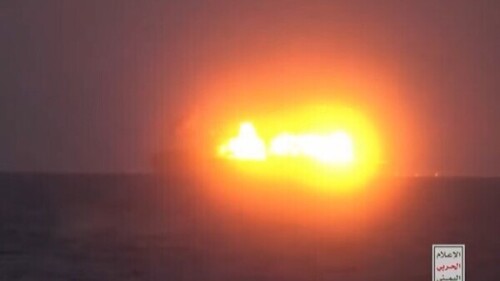The Israeli-built Fire Weaver advanced sensor-to-shooter system could join other high-tech Israeli systems being used by the U.S. military. |
The U.S. Army got to take a look at Rafael Advanced Defense Systems Fire Weaver, an advanced sensor-to-shooter system. It is part of Rafael’s unique technology that is supposed to improve the new digital battlefield by incorporating the latest artificial intelligence to help armies make better decisions. It also uses 3D terrain data.
The U.S. Army checked out the system as part of an operational assessment at the Army Expeditionary Warrior Experiment in Fort Benning, Georgia. Fire Weaver is made available by Rafael in Israel and its U.S. subsidiary. Like many Israeli defense giants, Rafael seeks to have either joint ventures or a U.S. subsidiary in order to play a greater role in offering its unique military technology to America. Rafael delivered two Iron Dome batteries to the U.S. Army over the last year and is making the Iron Dome with Raytheon. Rafael also makes the Trophy active protection system for U.S. Abrams tanks. That system is now celebrating a decade of success defending tanks against anti-tank guided missiles and other threats.
The Army Expeditionary Warrior Experiment also got a look at Rafael’s Spike SR missile during a live-fire demonstration last month. If America were to acquire more of these systems, like Fire Weaver, Spike, as well as the existing interest in Iron Dome and the APS system, it would be an unprecedented partnership with one of Israel’s leading defense companies. It illustrates the growing partnership with Israel and also the way Israeli technology has become renowned for the U.S. military as America prepares for this century’s changing battlefield.
To understand those changes is to get a sense of where AI and technology like Fire Weaver is taking militaries. The last century was a century of military innovation. It began with soldiers still using cavalry and ended with the destruction of Saddam Hussein’s army and U.S. hegemony, in a revolution of military affairs that saw technology and precision transform the battlefield. But cruise missiles and smart bombs, nuclear submarines and F-16s, were not enough. The new battlefield is moving to the next level through connecting airplanes, drones, soldiers on the frontline and robots all together.
“Fire Weaver integrates as an open and modular software application with existing battle management systems and other tactical computing devices. Fire Weaver enhances ground combat capability with enhanced situational awareness and ability to maximize available combat power in GPS-denied environments,” Rafael says. “It networks sensors and formations together, providing a shared understanding on a fully digital common operational picture (COP) enhanced with augmented reality of battlefield intelligence.” The result is intuitive situational awareness and common visual language “on the sights” of the battlefield for commanders and soldiers and enabling them to close sensor-to-shooter loops in seconds, the company asserts.
Rafael believes Fire Weaver could help the U.S. Army increase lethality. The key words today are “multi-domain” and “multi-dimensional,” or knitting more units and sensors and technology together on the battlefield. “At AEWE, soldiers operated the sensors and shooters to acquire and engage multiple targets, achieving effects in seconds where traditionally it would take minutes or longer,” Rafael says. This is important because one of the issues learned on battlefields over the last thirty years is that having technological dominance isn’t enough. Asymmetric conflicts can still inflict casualties and also force militaries into complex choices in urban environments fighting amongst civilians. In the old days militaries would flatten whole cities. However this century intends to be one where modern militaries don’t need to do that. Instead using artificial and other computations a commander can know which soldier or which drone might be best to take out an enemy. In a battle against an advanced near-peer enemy, of the kind the United States is preparing to meet in the next decades, armies also need to be digitally bound together and able to operate in GPS-denied environments. That means having scene matching and automatic target recognitions and the kind of technology that Israel has been working with and adding onto its munitions and sensors. “The artificial intelligence decision-aid algorithms provide target and weapon pairings based off a predetermined set of rules controlled by the Commander at echelon, with constant human on the loop presence for lethal tactical decisions,” Rafael notes.
In the U.S. operational assessment, the soldiers got several hours of training and an operational look at the systems. Half a day was spent with Fire Weaver and senior leaders from Army Futures Command and other forces were in attendance. Next year could see work with a live prototype. In early 2020, Rafael received a contract from the Israeli Ministry of Defense to supply Fire Weaver to Israeli Defense Force ground divisions, the company says, indicating its technology is making inroads at home and abroad.
Seth J. Frantzman is a Ginsburg-Milstein Writing Fellow at the Middle East Forum and senior Middle East correspondent at The Jerusalem Post.







